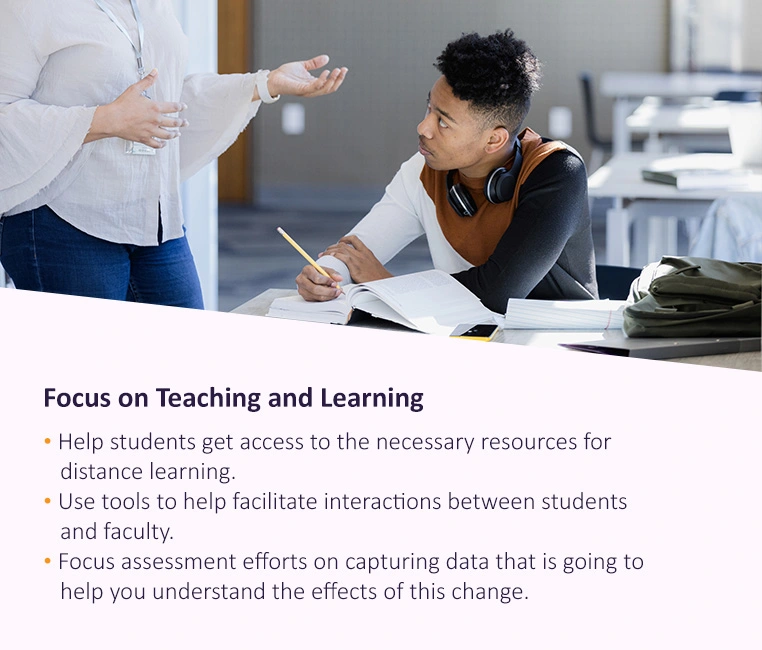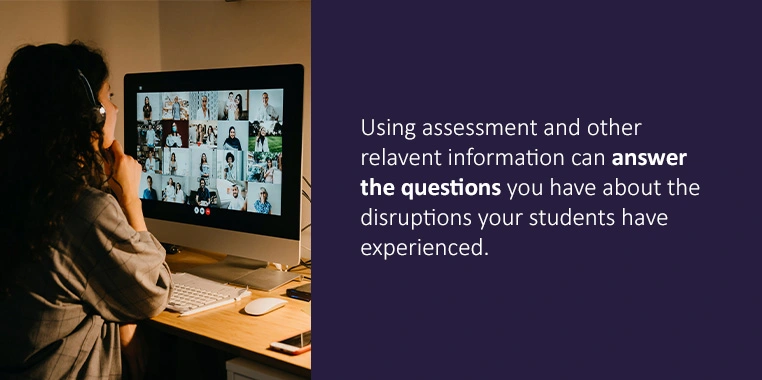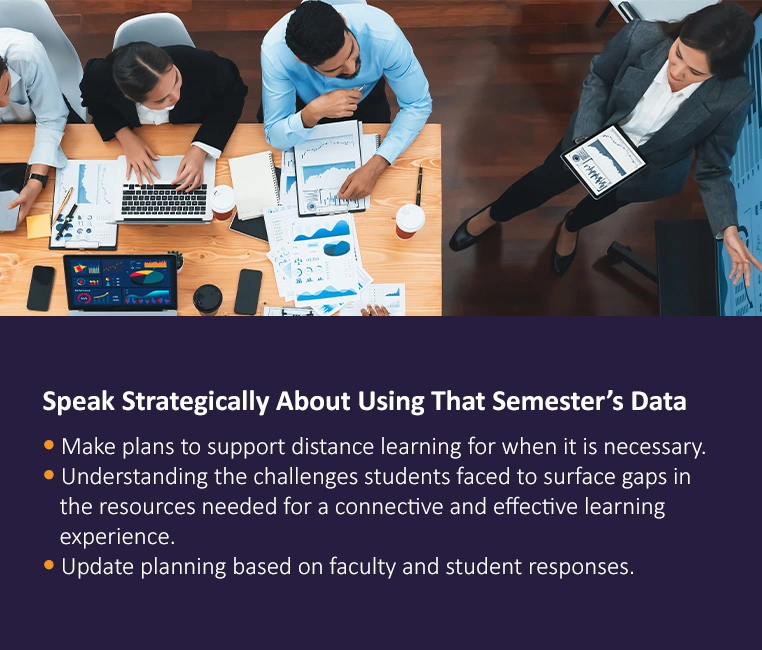




When the unexpected happens, how can you maintain institutional effectiveness despite disruption? Though COVID-19 was one of the largest disruptors higher ed has faced in generations, a pandemic is by no means the only type of crisis that can throw teaching and learning into disarray, as anyone in coastal or fire-prone regions can attest. Thanks to the incredible amount of collaboration that has happened over the last few years on listservs and the communities of professional organizations that support higher ed, we now know more about what it takes to sustain and support teaching and learning in challenging circumstances.
We’ve also learned how institutions use the data from disrupted terms differently than usual — to capture vital insights on a unique experience without applying it to processes the data might typically support, such as faculty reviews.
Here are 4 ways to maintain institutional effectiveness through a crisis and beyond, ensuring you can meet your institution’s long-term goals.

Most institutions had to make a nearly overnight pivot to distance learning at least once over the past few years, which can be a huge challenge for students and faculty.
When this happens, focus on what matters:
Matt Cooper, Associate Provost for Center for Teaching and Learning at Thomas Edison State University, a primarily online institution, has offered some advice for traditional institutions when transitioning and preparing to support distance learning when necessary:
“Maintain that connection to students and deliver your in-class content the best you can online,” he said. “Focus first on things like providing excellent feedback to students, making sure that rubrics are being utilized. Presence, communication, assessment — those should be the top three things that faculty should be looking at right now to improve the student experience this semester.”

The systems you use to capture assessment data, student evaluations of teaching, and other vital information can provide you with answers to pressing questions about the disruption your students have experienced, as well as their future plans. Consider how that data can prepare you to support students through the current upheaval, as well as prepare you for future unexpected events. You may choose not to incorporate this data into faculty evaluations or ongoing assessment efforts, but capturing it is critical.
Crisis situations present a natural experiment, so consider:

When disruption occurs, faculty may be justifiably worried about collecting data as usual. No one wants one of the hardest moments in living memory to reflect poorly on them as educators and scholars. But it’s vital to understand your students’ experience in order to improve on crisis response and distance learning delivery for the future. Also, be sure to share how the data will be used.
For example:
Capturing data in the true spirit of inquiry will reveal important opportunities to collaborate — across your institution and with your peer institutions throughout higher ed. Understanding the challenges students and faculty face during a crisis can strike up stronger partnerships between faculty and instructional designers, curriculum committees and instructors, and students with their faculty and advisors.
Use the data you captured to connect campus experts and create resources to improve the experience for everyone involved.
Consider:
Charles Hodges, Stephanie Moore, Barb Lockee, Torrey Trust, and Aaron Bond may have said it best in their EDUCAUSE article, “The Difference Between Emergency Remote Teaching and Online Learning” in relation to crisis:
“Although this situation is stressful, when it is over, institutions will emerge with an opportunity to evaluate how well they were able to implement ERT to maintain continuity of instruction. It is important to avoid the temptation to equate ERT with online learning during those evaluations. With careful planning, officials at every campus can evaluate their efforts, allowing those involved to highlight strengths and identify weaknesses to be better prepared for future needs to implement ERT.”
These learnings will ensure that if you need to move between distance and in-person learning during the course of a semester (or throughout an entire year), you can make informed decisions based on the actual experiences of your students, faculty, and staff.
Check out our Solution Tours to see how Watermark’s solutions can help you navigate technology-based learning.






























































































































































































































































































































































































Submit this form to schedule a meeting with one of our reps to learn more about our solutions. If you need customer support instead, click here.